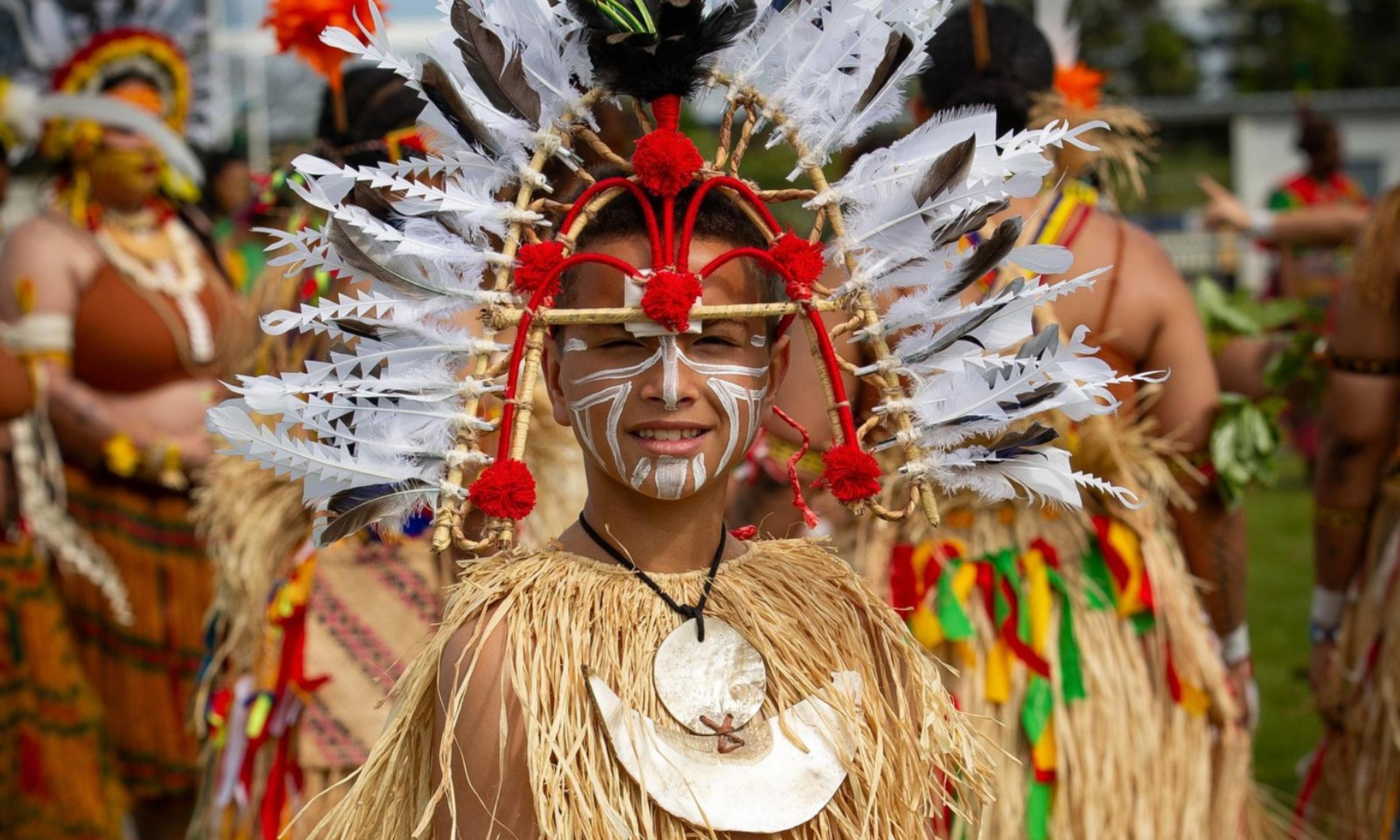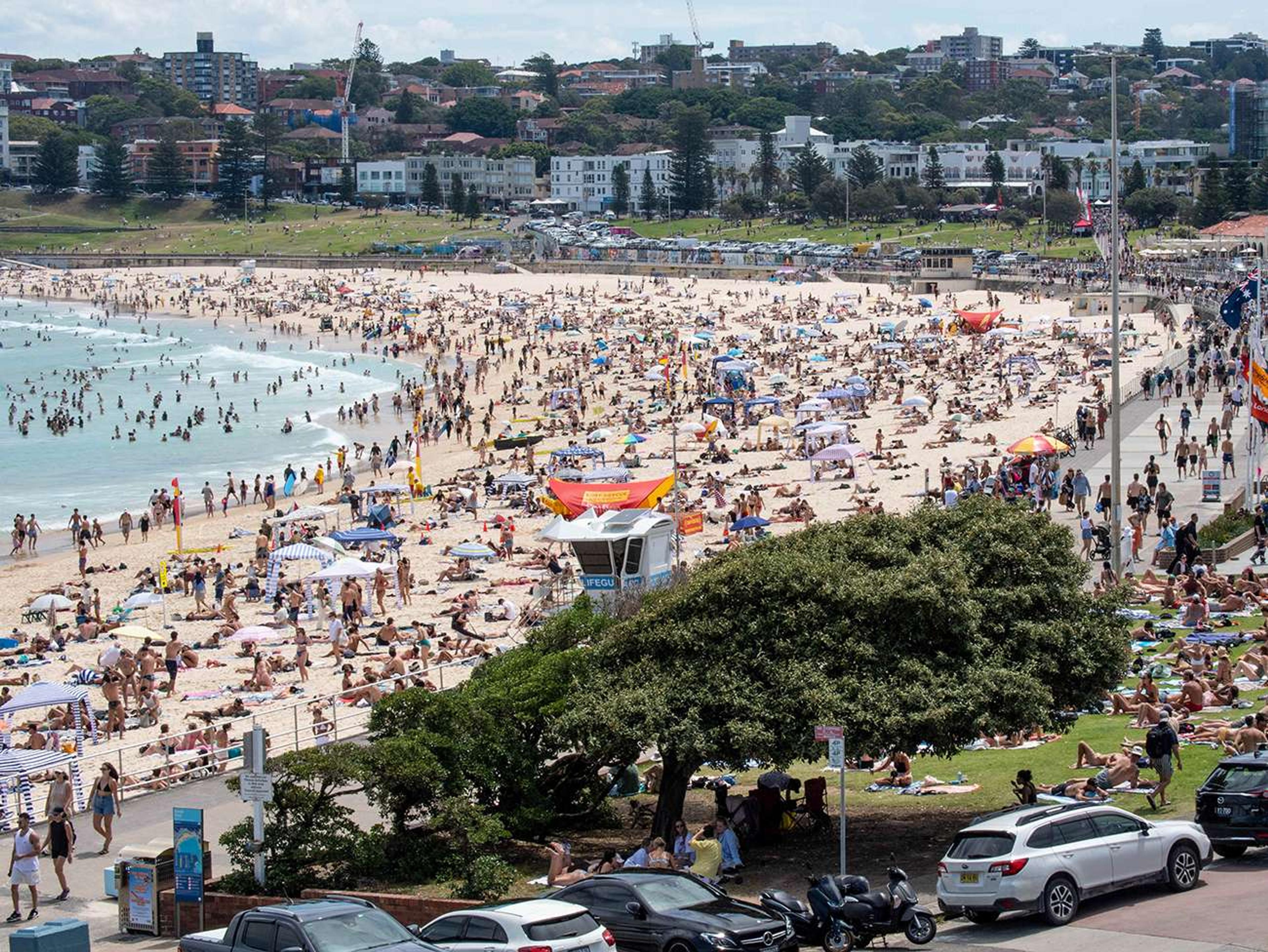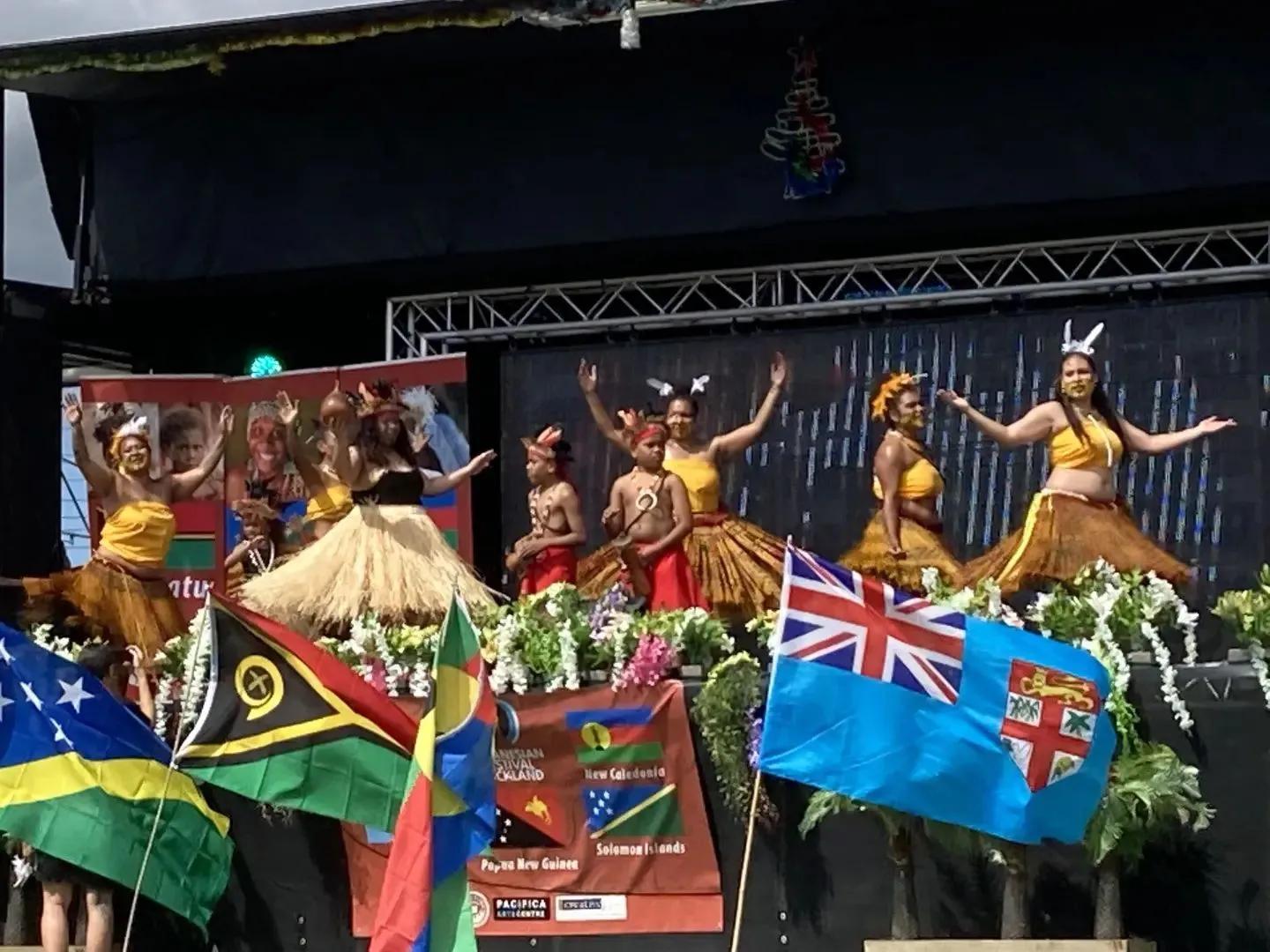

What hasn’t been widely noted before is how the festival is shifting from celebration to conversation.
Photo/Facebook/Melanesia Festival Aotearoa
Celebration, food and mingled voices at the 2025 Melanesian Festival Aotearoa
The event brought colour, song, and flavour to Auckland last weekend, but behind the dancing and food was a deeper message - a call for Melanesians to be seen and heard in New Zealand’s Pacific story.



Pacific leaders call for unity after Bondi attack

Black Caps legend joins global fight against gender violence

US warns Fiji over human trafficking concerns linked to Grace Road Group


Sāmoan stars in Aotearoa NZ: Donell Lewis and Kennyon Brown tour with DJ Noiz

Pacific leaders call for unity after Bondi attack

Black Caps legend joins global fight against gender violence

US warns Fiji over human trafficking concerns linked to Grace Road Group
What stood out at this year's Melanesian Festival Aotearoa was not just the music and dance, featuring artists like Stegga Bwoy, Fiakaal, and Koro Ni Laca Serenaders, but the emergence of behind-the-scenes voices and quieter conversations about Melanesian identity and visibility in New Zealand.
On Saturday, 1 November 2025, the crowds gathered bright and early at the Waitemata Rugby Club Grounds (96 Swanson Road, Henderson, Auckland) for the annual event - a day of arts, culture, and food from Melanesia, running from 9am until about 6pm.
In the lead-up to the festival, the arts body Creative New Zealand described how the festival connects to its new “Melanesian Arts Development Initiative” aimed at lifting the presence of Melanesian artists in the wider Pacific arts scene in New Zealand.
Cathy Bolinga, a community creative, commented on the thecoconet.tv: “It is important for communities representing different cultures and arts practices around Aotearoa to be supported …”
Bolinga adds these points to an angle beyond festival fun, a quiet push for recognition, networking, and cultural space.
From all the chatter on social media and in chats between stalls, something we don’t always hear in festival write-ups emerged: the food tables become hubs of connection, where someone from Vanuatu might meet someone from New Caledonia (Lifou), talk about lineage, migration, and islands far from home.
Watch highlights of the 2025 Chauka Collective Melanesian Festival Aotearoa below.
One visitor wrote online: “Loved the cassava and kokoda-style dish stall. Met my aunt from Fiji, who now lives here. We hadn’t seen each other since the lockdowns.”
What hasn’t been widely noted before is how the festival is shifting from celebration to conversation.
Among the many performances and stalls, there were actors, dancers, and elders quietly talking about what it means to be Melanesian in Aotearoa: maintaining language, customs, eating island food while raising Kiwi-born children, and creating spaces that aren’t just “Pacific” but Melanesian-specific.

Among the many performances and stalls, there were actors, dancers and elders quietly talking about what it means to be Melanesian in Aotearoa. Photo/Supplied
This has been supported in a recent article (thecoconet.tv+1) about the wider arts initiative: “The initiative aims to … strengthen the visibility of their diverse voices within the wider Pacific arts ecosystem in Aotearoa.”
From the music stage to the food stall, some voices stood out. One young performer from Lifou Island (New Caledonia) told a reporter: “We travelled to share our dance, our songs, and also meet our island cousins here.”
Another elder, organising a cultural group representing Fiji, shared: “When I was growing up, there were no big platforms for Melanesians here. Now our children can see their roots, hear their stories.”
A visitor summed it up on a community forum: “I came for the dancing, but stayed for the talks between stalls, and heard stories I’ve never heard in school.”
Festivals like this can easily be seen only as entertainment. But this year, the Melanesian Festival Aotearoa is hinting at something more: a growing confidence and voice for Melanesian culture in New Zealand.
Watch members of the Vanuatu community bring their island vibes to the Melanesian Festival Aotearoa below.
It’s about carving a place within the broader “Pacific” label and reminding New Zealand that Melanesia is distinct, vibrant, and present.
For the organisers and participating communities, the festival is a chance to build future networks, mentor younger artists, and strengthen cultural heritage in a new location.
As one creative leader put it: “We’re showing our culture, yes, but also asking: where next? Who will carry it forward?”
If this year's festival is any indication, 2026’s gathering might emphasise more workshops, more youth-led activism around culture, maybe more connection to island communities back home.
For now, the voices at Henderson on 1 November have made it clear that the show is more than just performance, it’s identity, it’s dialogue, and it’s community.
Watch Fiji-born New Zealand poet, writer, musician, and teacher and museum curator Daren Kamali's interview on PMN Fiji below.